Why you can trust Tom's Hardware
The PA32UCDM works and responds like its ProArt stablemates. Just pick the desired color mode and you’ll see that spec for grayscale, gamma and gamut. Calibration can be done in the OSD or via software but for this review, it was not necessary.
Grayscale and Gamma Tracking
Our grayscale and gamma tests use Calman calibration software from Portrait Displays. We describe our grayscale and gamma tests in detail here.
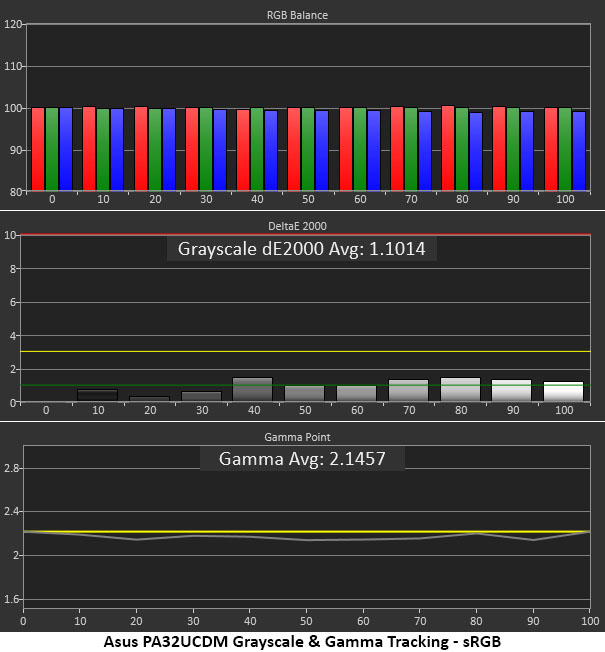
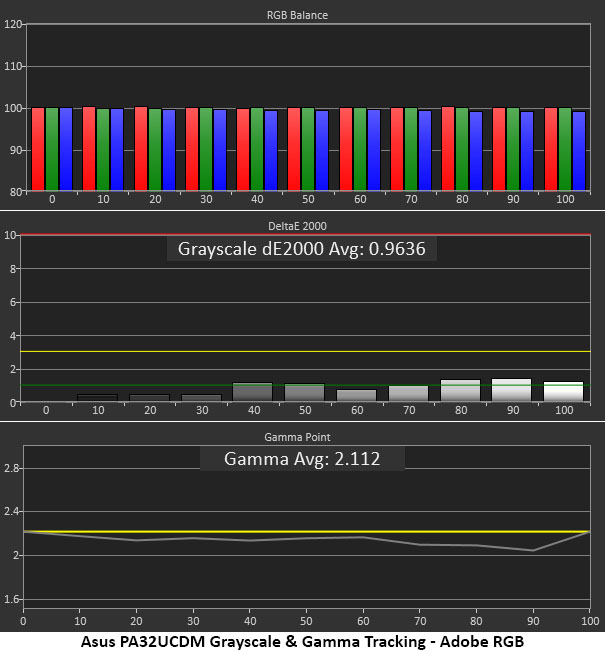
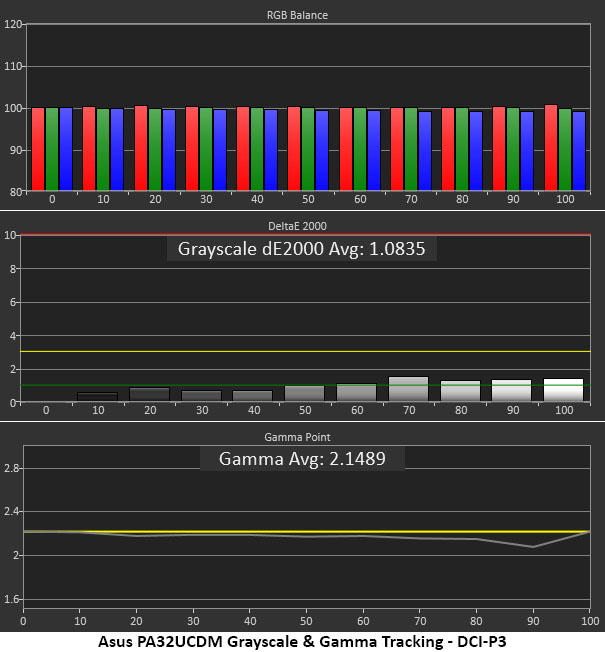
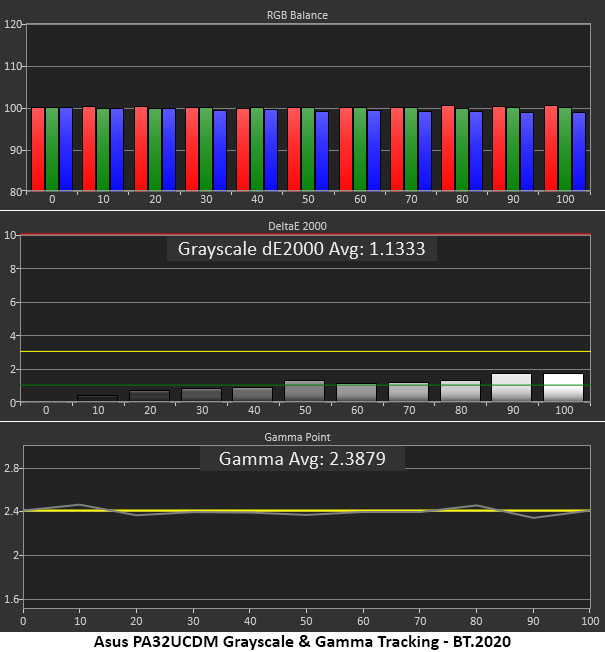
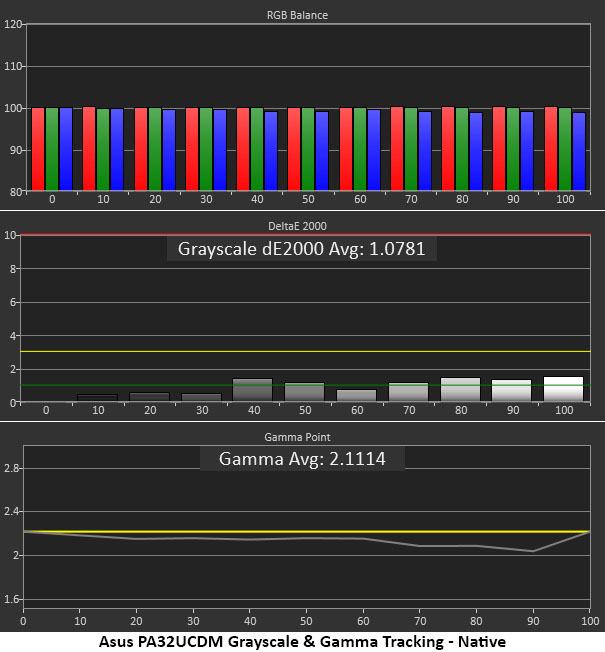
The only differences you’ll see above are the gamma reference. For sRGB, Adobe RGB and DCI-P3, it’s 2.2. DCI-P3 can also be set to theater mode with a 6300K color temp and 2.6 gamma. BT.2020 (SDR) runs at 2.4 gamma. All charts show that the PA32UCDM is correctly configured for these specifications with no visible grayscale errors. sRGB and Adobe RGB gammas are a tad light and DCI-P3 has a small dip at 90% brightness. These are minor issues.
The last chart shows Native mode, which is the PA32UCDM’s default. It uses 6500K color temp and 2.2 gamma but the monitor’s full gamut is 105% of DCI-P3. It’s useful for gaming and entertainment but has slightly light gamma in the brighter parts of the screen, and a little color oversaturation.
Comparisons
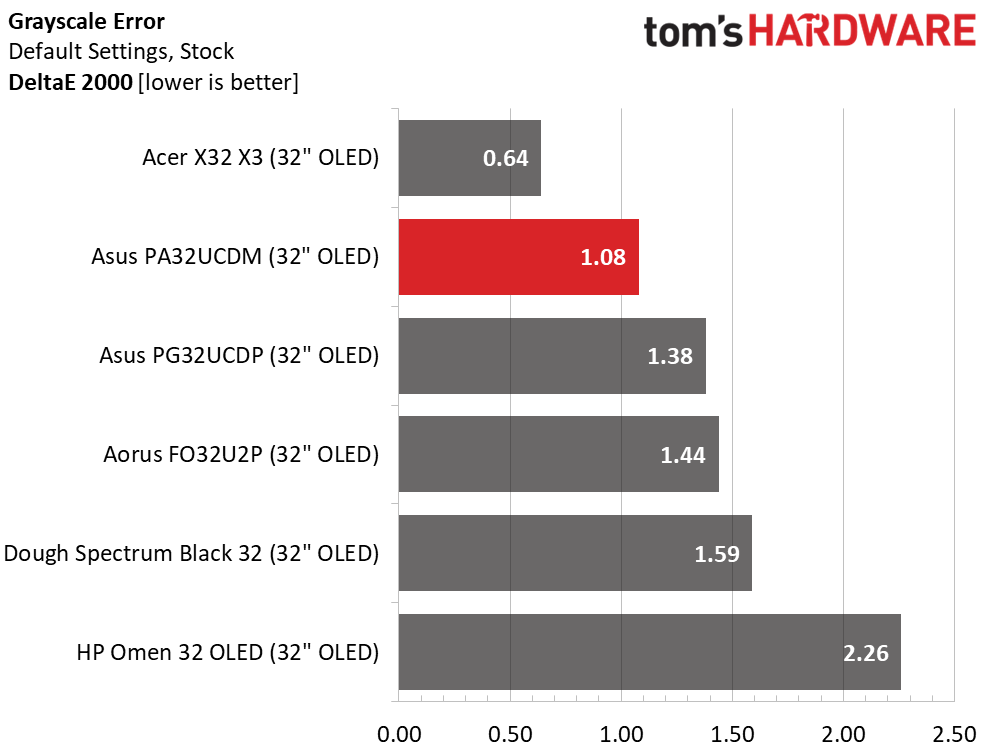
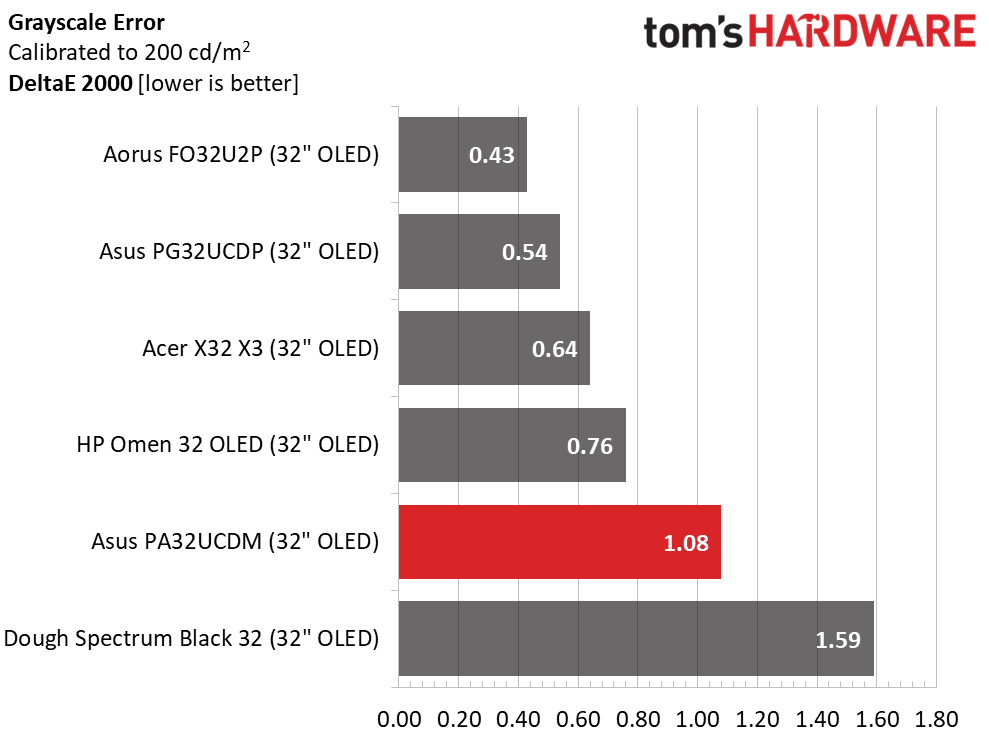
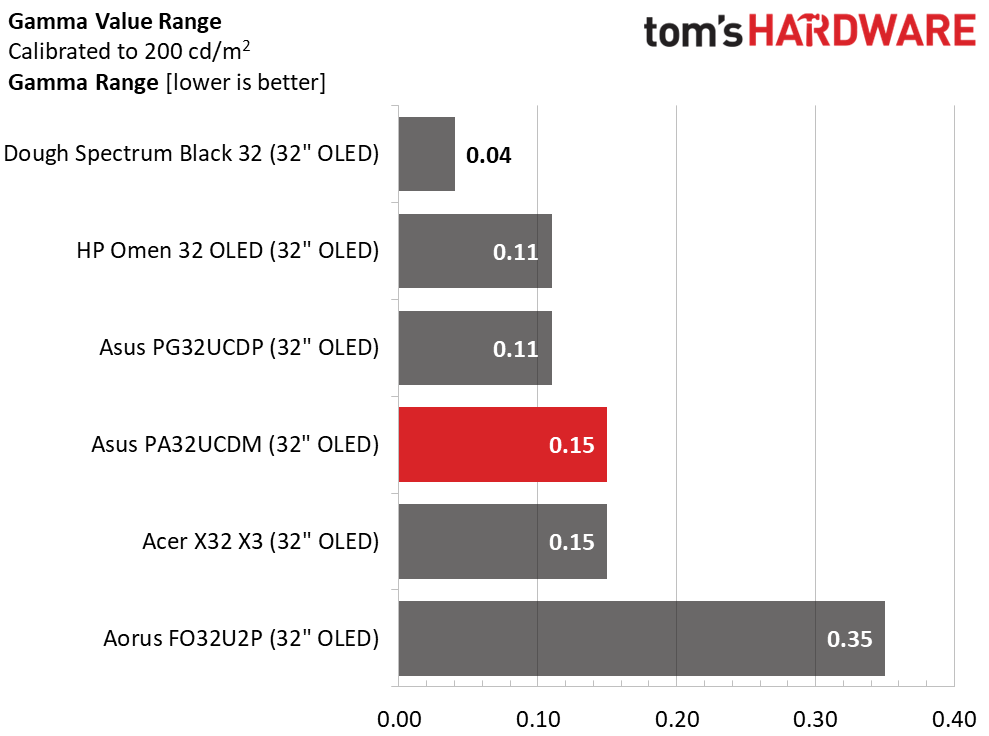
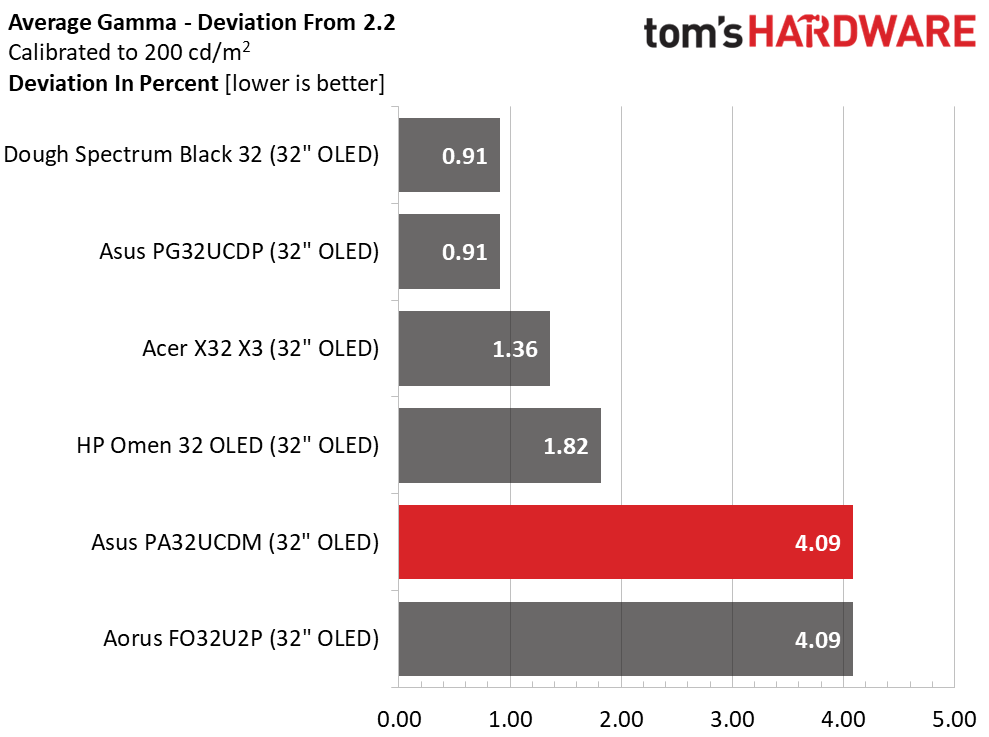
For the comparison, I used the numbers for Native mode. A 1.08dE result for grayscale is superb and is well below the visible threshold, and is better than all but the Acer in this test. Post-calibration, the PA32UCDM drops to fifth, but it’s still excellent.
The gamma results in Native mode are a tad weaker than what I found in the labeled color modes. But it is still well within the realm of quality imagery. The PA32UCDM’s value range is 0.15, not too bad, and the deviation is 4.09%, actual value 2.11.
Color Gamut Accuracy
Our color gamut and volume testing use Portrait Displays’ Calman software. For details on our color gamut testing and volume calculations, click here.
Get Tom's Hardware's best news and in-depth reviews, straight to your inbox.
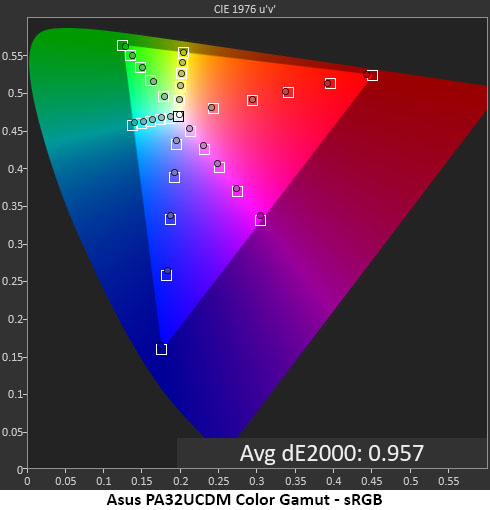
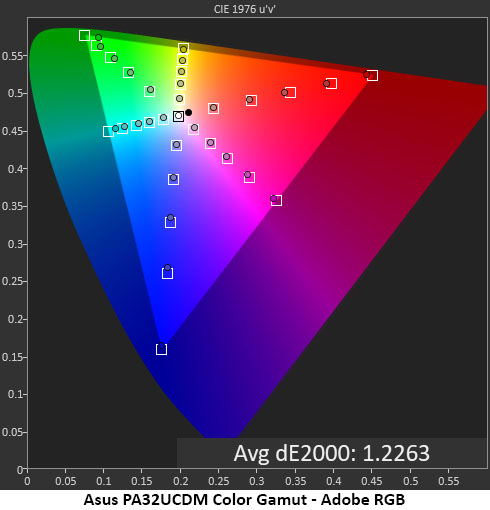
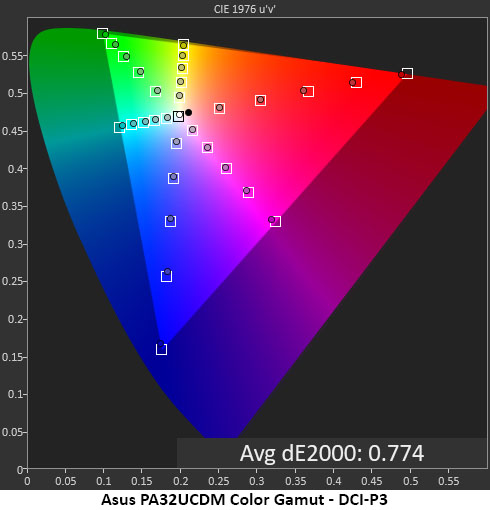
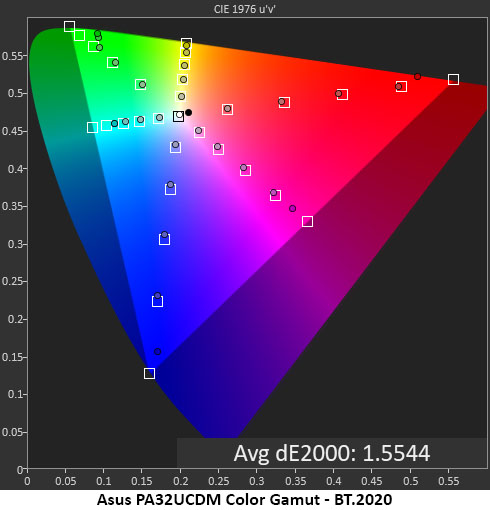
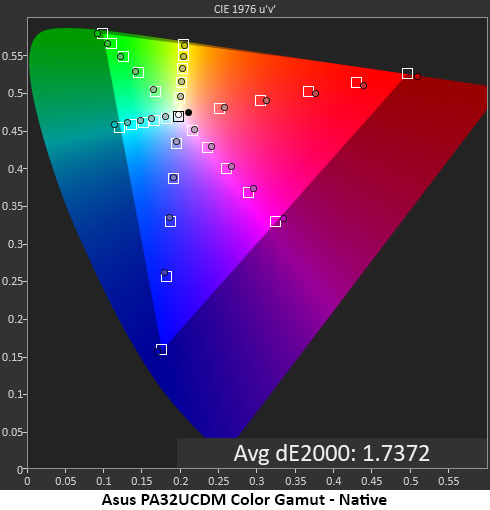
Same as above, to pick your preferred color spec, just choose from among the PA32UCDM’s presets. The results for DCI-P3 and sRGB are visually perfect. Native is also very close, with just slight oversaturation in green and red. This won’t have a negative visual impact. The only issues were found in BT.2020 where red saturation tops out at 85% and green stops at 75%. It also takes a turn to the triangle’s perimeter to maintain a visible difference from the lower saturation points. This is typical performance for wide gamut monitors. Also noted is green undersaturation in the Adobe RGB chart. This is also typical of wide gamut monitors. True Adobe RGB has more green than DCI-P3 so this result tracks with my tests of other QD-OLEDs.
Comparisons
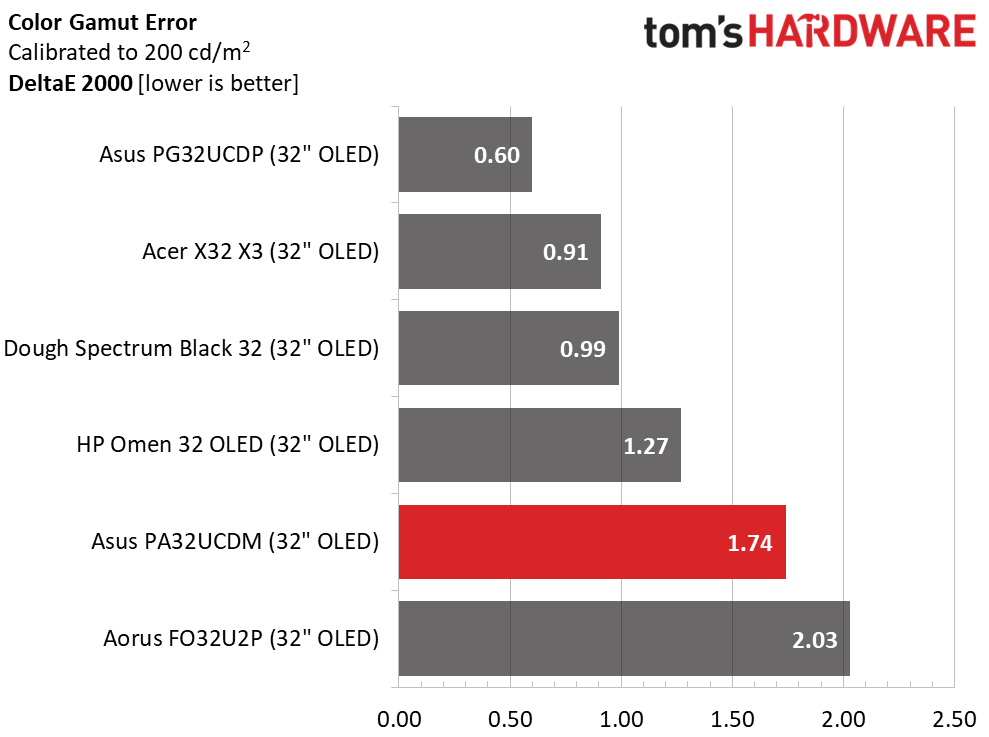
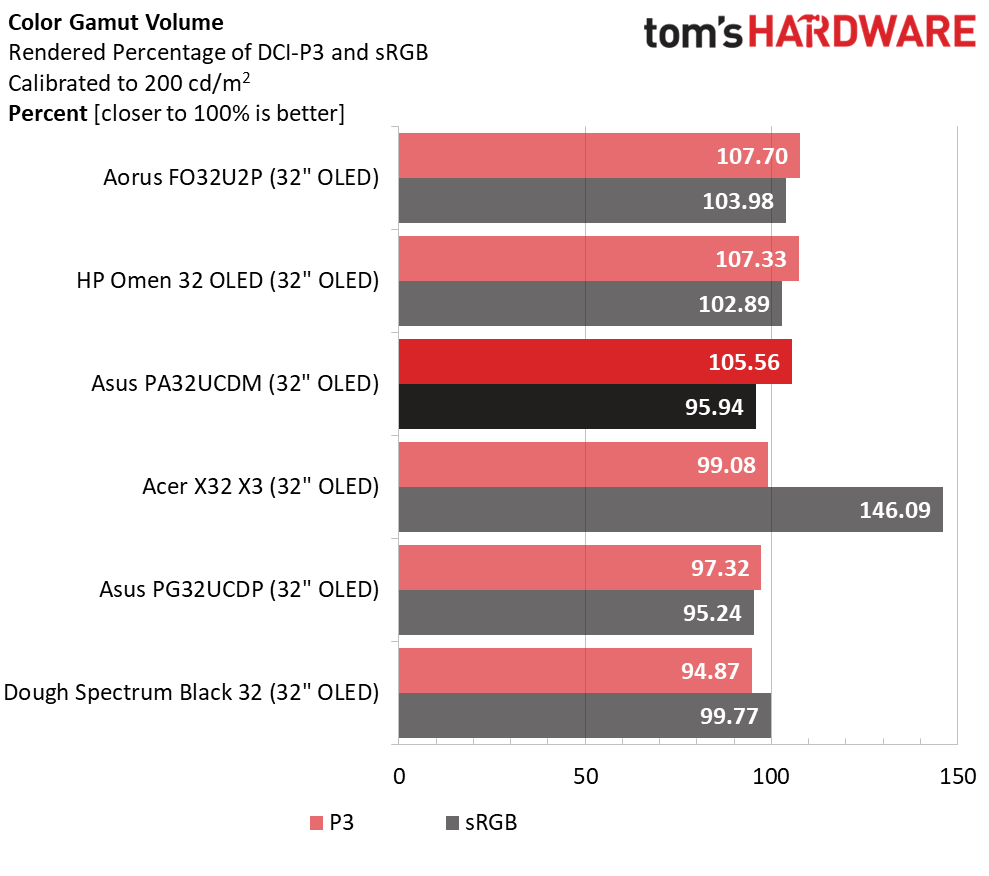
Again, we see the PA32UCDM’s Native mode compared to the other screen. It is more than qualified for any critical application with a low error of 1.74dE. The labeled color modes are even lower, ranging from 0.77-1.55dE. No matter which you choose, you’ll see accurate color.
It’s easy to see which screens are QD and which are not. The PA32UCDM is the former and it comes in just a tad behind the Aorus and HP monitors. Can you see a 2% difference in color volume? Maybe in the most extreme shades of red, but most content will look the same on the three top displays. The labeled modes cover between 95 and 100%, which is ideal for mastering in any spec desired.
Test Takeaway: The PA32UCDM’s ability to call up any color mode with spot-on accuracy is unparalleled by anything other than another Asus ProArt monitor. Calibration is not required in any mode though it can be accomplished easily if desired. The level of flexibility here is extremely high.
MORE: Best Gaming Monitors
MORE: How We Test PC Monitors
MORE: How to Buy a PC Monitor
Current page: Grayscale, Gamma and Color
Prev Page Brightness and Contrast Next Page HDR Performance
Christian Eberle is a Contributing Editor for Tom's Hardware US. He's a veteran reviewer of A/V equipment, specializing in monitors. Christian began his obsession with tech when he built his first PC in 1991, a 286 running DOS 3.0 at a blazing 12MHz. In 2006, he undertook training from the Imaging Science Foundation in video calibration and testing and thus started a passion for precise imaging that persists to this day. He is also a professional musician with a degree from the New England Conservatory as a classical bassoonist which he used to good effect as a performer with the West Point Army Band from 1987 to 2013. He enjoys watching movies and listening to high-end audio in his custom-built home theater and can be seen riding trails near his home on a race-ready ICE VTX recumbent trike. Christian enjoys the endless summer in Florida where he lives with his wife and Chihuahua and plays with orchestras around the state.
-
qwertymac93 Is it possible to use a usb-c to display port adapter backwards to plug in a graphics card to the monitor? A single HDMI input and no display port is a real PITA for those of us with normal graphics cards that also want to plug in a gaming console.Reply -
gamer_jim I've read the gaming sections of this review twice. I bought a new PC for Lightroom and flight Sim 2024, Hunt Showdown and Age of Empires with a 9800x3d and 5080.Reply
I'm wanting a monitor to photo edit (hobby enthusiast) and game.
Given adaptive sync cuts at 120hz but I may able to achieve above this. Will I get screen tearing or any issues. I've only ever known my 165hz 27" that supports gsync to the refresh rate limit of the monitor.
Is this something they can update with firmware. Guessing it's a limit of the HDMI port.....wish they included display port.
Basically should I buy this or get something like the Gigabyte Aorus fo32u2p or PG32UCDM?? -
oofdragon No bling advert.. coff review will shake the fact this product is a utterly fail at this price point. No monitor justify costing more than a grand, even $600 for every other 32 inch OLED is kind of too much already. And you know, 32 inch is such a dumb size l, c'mon. It's 27 for 2k and 40 for 4k, in between is dumb. Just give it another resolution if you want to sell it at 32Reply -
gamer_jim Reply
Thought I'd come back and say I decided not to go with this screen and Bought the Gigabyte Aorus FO32U2P which RTINGS had as a great gaming and photography monitor.gamer_jim said:I've read the gaming sections of this review twice. I bought a new PC for Lightroom and flight Sim 2024, Hunt Showdown and Age of Empires with a 9800x3d and 5080.
I'm wanting a monitor to photo edit (hobby enthusiast) and game.
Given adaptive sync cuts at 120hz but I may able to achieve above this. Will I get screen tearing or any issues. I've only ever known my 165hz 27" that supports gsync to the refresh rate limit of the monitor.
Is this something they can update with firmware. Guessing it's a limit of the HDMI port.....wish they included display port.
Basically should I buy this or get something like the Gigabyte Aorus fo32u2p or PG32UCDM??
Asus did a big fail not making this a proper use for color critical workers who also game in the offline at home. All they had to do was add DP1.4 (or 2.1) and add features from their 32" PG32xxxx gaming line and it would have been a home run.
Asus support on the phone told me VRR 120Hz cap is a hardware limit and won't be able to go to 240hz in future firmware updates.
Plenty of us gamer dads are willing to pay slightly more for something not so RGB crazy in their office. Hopefully in the future they add a DP port and VRR through to the max frame rate of the monitor.
